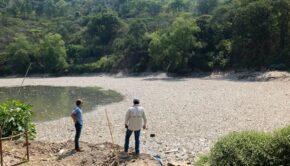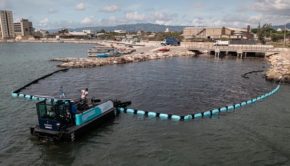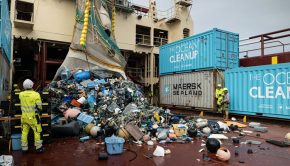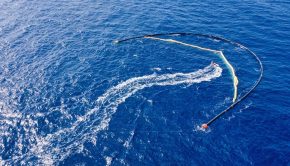Great Pacific Garbage Patch Paradox
Published on September 1st, 2022
The Ocean Cleanup is a non-profit organization that develops and scales technologies to rid the world’s oceans of plastic. Their focus has been the Great Pacific Garbage Patch (GPGP), an area located between Hawaii and California that is the largest accumulation of ocean plastic in the world.
Formed and retained by currents, The Ocean Cleanup has published new research in the journal Scientific Reports showing that the GPGP is largely composed of fishing-related plastic waste, with 75% to 86% of all plastic waste in the GPGP identified as coming from offshore fishing activity.
The irony is among the greatest concerns of ocean plastic is its impact on sea life health, yet the industry that relies on a healthy ocean is hurting it.
Analysis of over 6,000 plastic objects also found that major industrialized fishing nations (including the United States, China, Japan and Korea) are the principal producers of the fishing waste found in the GPGP, an area three times the size of France.
At a global level, emissions from rivers remain by far the largest source of plastic pollution into the oceans. However, specifically for the GPGP, this is not the case, and this confirms that the GPGP requires an approach not only involving cleanup and interception; this ‘other source’ of GPGP pollution – i.e., plastic originating from fishing activities – must also be tackled.
The Ocean Cleanup conducted the research on plastic objects and fragments captured in the GPGP during cleaning operations of its System 001/B solution in 2019. Researchers painstakingly investigated the origins, sources and ages of these objects to create the most comprehensive picture of GPGP plastic so far presented, building on The Ocean Cleanup’s previous research, conducted in 2018.
“This research significantly expands our understanding of the Great Pacific Garbage Patch,” said Matthias Egger, Ocean Plastic Researcher at The Ocean Cleanup. “In order to solve this problem we need to understand it, and identifying the origins of GPGP plastic is essential to our cleanup efforts, and the efforts of other organizations, to reduce this other source of pollution.”
“To stop the inflow of plastic into our oceans, addressing river emissions – the largest source – must remain core priority,” said Boyan Slat, founder and CEO of The Ocean Cleanup. “However, to ensure our work to clean up the GPGP is truly sustainable, fishing gear inputs must also be stopped. We hope our latest study will enable organizations and the fishing industry itself to address this other source of plastic pollution to the GPGP.”









 We’ll keep your information safe.
We’ll keep your information safe.